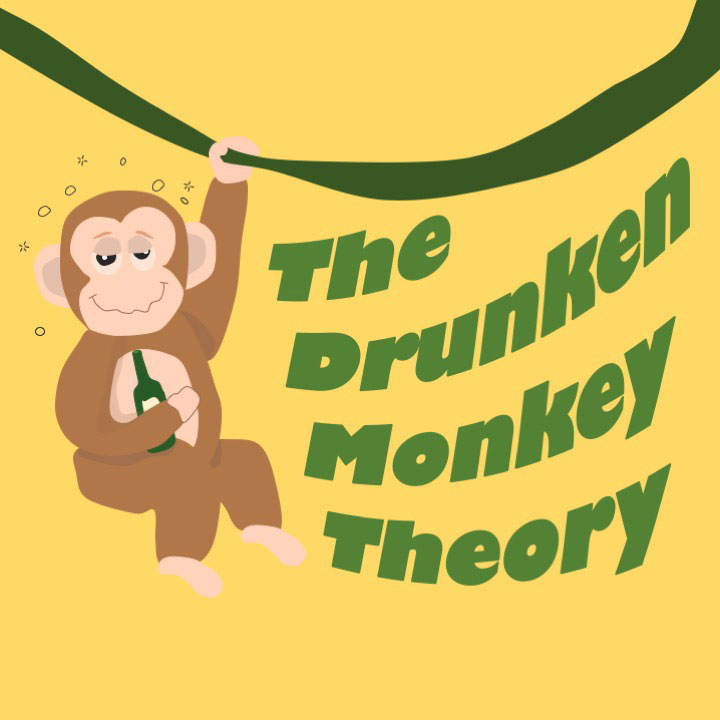
Written by Hasan Galib
Illustrated by Tammy Lee
Alcoholism is perhaps the most common form of drug abuse in North America. Its popularity is based on the fact that it is widely considered pleasant, relaxing, and a “social beverage”. With nearly 15 million people suffering from conditions of alcohol abuse, it is clear alcoholism is a burden on today’s society, especially since 30% of all road fatalities are a result of alcohol-impaired driving.
But what if we told you that millions of years of evolution have wired your brain to seek out that glass of wine, or two, or three? This might be a bit hard to believe since many people would (rightly) assume that substance abuse and addiction is the result of recent exposure to psychoactive compounds produced via chemical manufacturing processes that have only been around for a relatively short time. Production of alcohol, ‘Breaking Bad’ style, was far beyond the capabilities of our primate ancestors. So where would our ancestors have gotten access to alcohol?
The first clue lies in the fact that millions of years ago, yeast (single-celled fungi) was widely found on and inside ripening fruits, and through the process of fermentation, the yeast metabolized naturally occurring sugars in fruits to yield ethanol! Amazingly, researchers have found the alcohol content in ripe fruits can average 4.5% and some have shown a maximum of 8.1%. That’s more alcohol than in an average can of beer! This fermentative ability of yeast is more pronounced in warmer and wetter climates of the tropics and savannah where our ancestors evolved.
Secondly, paleobiologic studies on the human diet show that modern humans have evolved from a lineage of primates that predominantly had a fruit-based diet dating back at least 24 million years, and even though our diet has diversified as we evolved into our hunter/gatherer lifestyle, fruits nonetheless remained a significant source of sustenance. Therefore, incidental exposure to ethanol in ripe fruits has been an inevitable outcome of foraging during human evolution.
This strong association of ethanol with sources of nutation can thus lead to the use of ethanol as a strong behavioral cue for our ancestors. Natural selection may have favoured physiological and morphological traits such as stronger olfactory recognition of ethanol plumes to help localize food sources. Ethanol itself could have evolved to act as an appetite stimulant for the rapid consumption of fruits before their decay. Such behavior would provide an obvious evolutionary advantage and since selection acts slowly, it may have been retained in modern humans in spite of the significant changes in food availability and composition. In a modern environment, seeking out and excessive drinking of alcohols represents a maladaptive version of a previously advantageous behavior.
The wide range of contemporary behavioral responses observed so far is consistent with this “drunken monkey” theory for alcoholism. However, the evolutionary perspective on human alcoholism have received little attention from the medical community, so concrete data supporting this theory is few and far between. The theory mostly relies on anecdotal evidence.
Alternatively, a lot of studies are currently being performed on fruit flies to evaluate the physiological and evolutionary effects of natural ethanol exposure, since fruit fly larvae encounter and consume ethanol while they develop inside fruits and the adult flies use ethanol cues to localized fruits much like our ancestors. Although an unlikely candidate to understand the evolution of alcoholism in humans, flies provide an exciting source of insight into our past and perhaps an explanation for our present state of hangover.
Sources:
- Dudley, R. Ethanol, Fruit Ripening, and the Historical Origins of Human Alcoholism in Primate Frugivory.(2004). Integrative and Comparative Biology,44(4), 315-323. doi:10.1093/icb/44.4.315
- Dudley, R. Fermenting fruit and the historical ecology of ethanol ingestion: Is alcoholism in modern humans an evolutionary hangover? (2002). Addiction,97(4), 381-388. doi:10.1046/j.1360-0443.2002.00002.x
- CDC – Fact Sheets-Alcohol Use And Health – Alcohol. (2018). Centers for Disease Control and Prevention, Centers for Disease Control and Prevention.